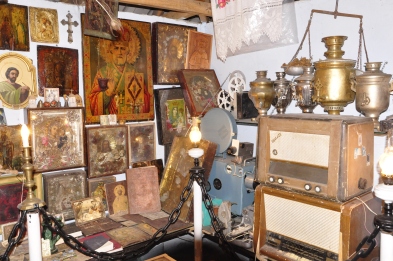
Orhei is a locality with rich cultural values and traditions. The town has 63 historical monuments and memorials, monuments of art and architecture, of them 14 of national importance, 49 of local importance, 1 house of culture, 7 libraries and two artistic education institutions (painting and music). There are amateur artistic troops in the town. Numerous points of interest may be visited in Orhei district.
The „Sfantul Dumitru" cathedral: the oldest religious point of interest in Orhei and one of the oldest in the country, the “Sfantul Dumitru” cathedral was constructed during the years 1632 - 1636. The cathedral’s patron was the governor of Moldova Vasile Lupu (1634-1653). The church is part of national patrimony, being one of the most important ecclesiastic structures preserved to the present date.
The image of “Sf. Dumitru” cathedral of Orhei appears on the 5MDL banknote.
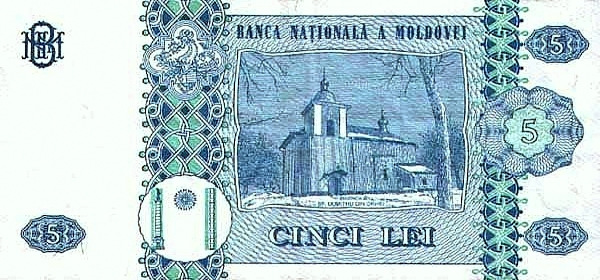
The monument of Vasile Lupu. Vasile Lupu was the governor of Moldova during the years 1634-1653. Namely during the governance of Vasile Lupu Orhei developed most dynamically. The governor’s monument was installed in the center of the town in the year 1938. The author of the sculpture is the Romanian sculptor Oscar Han. The bronze statute presents Vasile Lupu in governor’s garments, holding a chart in his right hand. The pedestal is made of Cosauti stone. The statue is a record-maker in the number of movements, it has been moved from one place to another for 8 times.
.jpg)
The „Sfantul Nicolae" cathedral is located in the town center. It has been constructed in the beginning of XXth century and has a tragic story. The cathedral has been partially destroyed during the World War II. During the times of USSR the sacred building was transformed into a storage facility and then into a sports school. Only after 1990 the “Sf. Nicolae” cathedral was restored and re-opened for the parish.
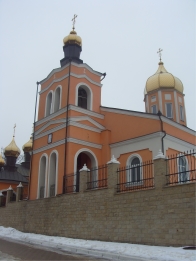
The Roman Catholic Church The Dormition of the Virgin - a true treasure of Orhei ad one of the few masterpieces of neo-gothic architecture in the whole country. It has been constructed in 1914 by Cezarina Dobrovolskaya for the town’s catholic community, mostly composed of the Polish, Lithuanian and Germans. Cezarina Dobrovolskaya was a Lithuanian catholic, while her husband was a noble Russian orthodox. Both were generous and open-hearted Christians and patrons of holy places in Orhei. She sponsored the Catholic Church and he sponsored the Orthodox Church in Braviceni community. As many other holy structures in Moldova, this church also had a sad story. During the times of USSR the building was partially abandoned and partially destroyed, another part of it was transformed into a sports hall and then into a storage facility. After the proclamation of independence for many years the church remained forgotten for a long time. Owing to the will of the reverend Klaus Kniffki in 2005 the church was ceded to the small catholic community of Orhei. In the year 2008 it was reopened, after a complex restoration.
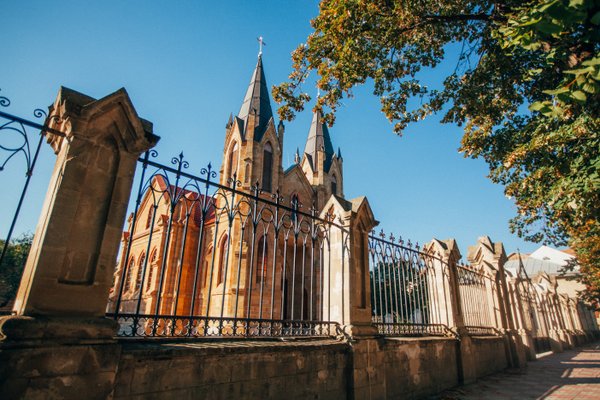
The museum of history and ethnography. It is located in Orhei, in the house of Mircea Bengulescu, the town’s former architect. The collection includes over 20 thousand of exhibits, the most valuable being the collections of old coins and books. The museum’s permanent exhibition is dedicated to the historical and archeological researches conducted on the territory of Orhei district.
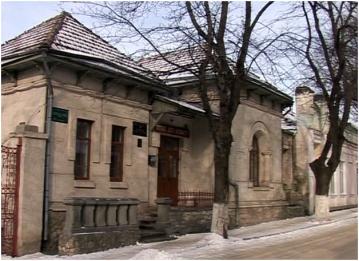
The old office of Orhei district council. It is a monument of history and architecture of XIXth century. The building was constructed at the order of the former chairman of district council of Orhei, Alexandru Cotruta. On 25th March 1918 in this building the councilors of Orhei district voted the motion of union of Bessarabia with Romania. Since 1st January 1919 the building hosted the prefecture and the tribunal of Orhei district. Now the building hosts the Theoretical Lyceum “Ioan Luca Caragiale”.
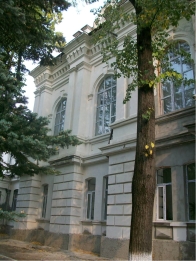
The Court of Orhei - monument of history and architecture of XXth century. It is the former house of doctor and solicitor Mihai Coteanu, director of the magazine „Fratia Romaneasca” of Orhei (periodical edition, 1919-1940). After the World War II the building hosted the Executive Committee of the People’s Deputies of Orhei. In the 90ths the building was ceded to the Court of Orhei district.
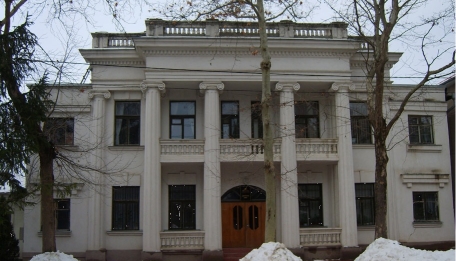
The museum house of „A. Donici”. The museum house is located in the Donici village, Orhei district. It has been inaugurated in 1976, in the old mansion of Donici family. There in the year 1806 was born the famous fabulist Alexandru Donici. Next to the mansion is located the church „Dormition of the Virgin” sponsored by the writer’s father, the family graves and the spring “Stanca” beautified by the family of Dimitrie and Elena Donici. The church is a smaller copy of a cathedral from Sankt Petersburg.
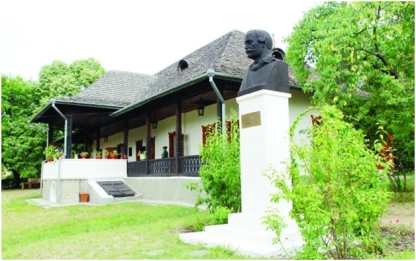
The Cucuruzeni Museum has been organized by the Public Association "Ion Budulai". It is located in the Ocnita-Razesi village, Cucuruzeni commune, Orhei district. It has been founded by Ion Adomnitei a passionate collector of old objects who transformed his household into a true museum. It features over 6.000 exhibits – from the old garden tools to arms, military uniforms, icons, standards, radios of 50ths, objects of furniture and musical instruments.
The Lazo family mansion. It is located in Piatra village, Orhei district. The mansion of Lazo family in the Piatra village has been constructed in the second half of XIXth century by Ion and Matilda Lazo. The exhibition halls contain household items, furniture, photographs, books of XIXth century that belonged to Lazo family. In the vicinity of the mansion stands the church constructed by Enache Lazo and his wife Victoria Donici at the end of XVIIIth century – beginning of XIXth century. The mansion is located in the heart of a garden facing the valley of Raut river.
The Bagdasarov family mansion. It is located in the Piatra village. It belonged to a noble Armenian family – Bagdasarov, they were said to have come to Bessarabia from Turkey. By the beginning of XXth century it was a typical noble household, it had numerous poultry and pig farms, sheep folds, as well as orchards and vineries. The complex was a quite large one, it had numerous facilities and a even a tavern behind the mansion and a pond in front of it. The elder people recall that the household master had a garage for his car and several tractors, as well as a mini power generator.
The museum complex „ Balioz Mansion” (the Museum of Popular Workmanships). The museum is located in Ivancea village, Orhei district. The mansion of Balioz family in Ivancea village was constructed in the second half of XIXth century at the order of Armenian boyar Carabet Balioz. The mansion includes a park of 7 hectars with chestnut trees, firs and limes. The mansion hosts the Museum of Popular Workmanships founded in 1984 based on the old collections of the National Museum of Ethnography and Natural History. The museum presents the traditional workmanships in an integral and ample manner. The exhibition covers an area of 400 square meters with authentic exhibits of XIXth – XXth century: pottery, wood processing, metal processing, stone carving, leather works, carpet-making, popular suits, embroidery, wickerwork with vegetal fibers and manufacturing of popular instruments.
Museum of History and Archeology ”Orheiul Vechi”. The museum is located in the open air, between the villages Butuceni and Trebujeni, Orhei district, on an area of 220 hectares. This is a monument of special importance, as it preserves the traces of human life since the ancient times and late Middle Ages. The cultural strata of this monument reflect the entire national and regional history with elements of high archeological importance.
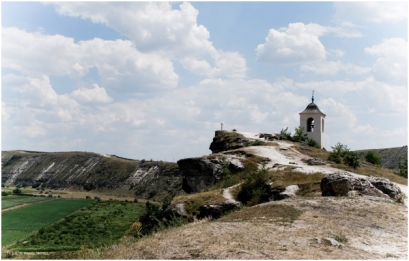
The Curchi monastery (men’s monastery). Temple: The Birth of Mary. The temple is located in Curchi village, Orhei district, at the distance of 12 km from Orhei or 55 km from Chisinau. Some researchers consider that the monastery appeared at the time of reign of Ştefan cel Mare. According to the documents, the monastery appeared during the times of governance of Alexandru Ghica when the peasant Iordache Curchiu decided to build a wooden hermitage dedicated to the Saint Dumitru on the territory of his farm. In 1809 the hermitage became a monastery. A beautiful church has been constructed in the years 1937-1938 with a temple of the Great Saint Hierarch Nicolae. During the Soviet era the churches were transformed into clubs and storage facilities. The monastery became a psychiatric hospital. The cemetery has been leveled and the crosses have been demolished. The monastery was re-opened in 1992. In 1995 a theological seminary is founded and the repair of churches began. One of the patrons of the Church of Birth of Mary is the King Mihai of Romania. The monastery is included into the list of architectural monuments of UNESCO.
The Butuceni hermitage (men’s hermitage). Temple: Dormition of the Virgin. The hermitage is located in Butuceni village at the distance of 15 km from Orhei or 60 km from Chisinau. It is nested in the right bank, the rocky and abrupt bank of Raut river. The hermitage seems to have been constructed in the XVth century. The church contains several icons with inscriptions dated to XVIIIth century. In the soviet period this historical complex has been transformed into an outdoor museum for tourists. In the year 1996 the hermitage was re-opened.
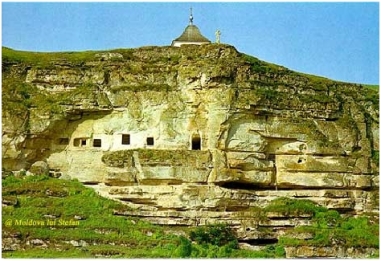
The Tabara nunnery. Temple: Dormition of the Virgin. It is located in the center of Tabara village, Orhei district, at 35 km from Chisinau municipality and 25 km from Orhei. Some researchers consider that it has been founded in 1784 by the boyar Gheorghe Russo, others consider that it has been founded by Darie Carp. Initially it was a monastery, but in 1815 it has been transformed into a nunnery. In the year 1828 was constructed the summer church with the temple of Dormition of the Virgin. Later, in 1857 the second stone church – the Holy Trinity has been constructed. During the soviet times the Church of Dormition of Virgin became a club, later it was turned into a storage facility, the Trinity Church became a village school. The nuns were driven-out in 1959, many of the nunnery houses were occupied by the villagers. The monastery reopened in 1990. The monastery has two old icons of the Virgin with small Jesus dated 1821 and 1863, respectively.
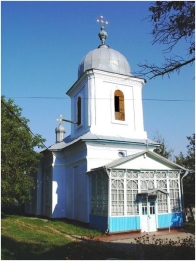
The Hirova nunnery. Temple: The Holy Simeon Pole-Stander. The temple is located in the village Niculaeuca, Orhei district, at the distance of 60 km from Chisinau or 15 km from Orhei. It hectares been founded as a nunnery by the Metropolitan of Moldova Veniamin Costachi in 1805. During the period between the two world wars the monastery had 190 nuns. The monastery was closed in 1959 and reopened in 1990.
Monument of Geological Nature and Paleontology „Location of fossil vertebrates”. It is a natural area protected by the state. It has an area of 2 hectares, located at the western margin of Pocsesti village, Orhei district.
Monument of Geological Nature and Paleontology „Defileul Orhei”. It is a natural area protected by the state. It has an area of 100 hectares, near Orhei town.
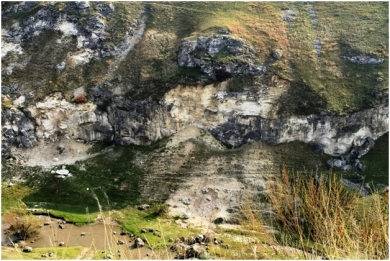
It is a natural area protected by the state. It has an area of „Reef on the Raut Bank”. It is a natural area protected by the state. It occupies an area of 3 hectares in the vicinity of Piatra village, Orhei district, on the right bank of Raut river.
Monument of Geological Nature and Paleontology „Stanca Magla”. It is a natural area protected by the state. It occupies an area of 3 hectares, at the distance of 0,5 km to north-east from Piatra village, Orhei district.
Monument of Hydrological Nature „ Cucuruzeni Spring”. It is a natural area protected by the state. It occupies an area of 0,5 hectares, in the proximity of Cucuruzeni village, Orhei district, on the right bank of Cogalnic river.
Monument of Hydrological Nature „Izvoare”. It is a natural area protected by the state. It occupies an area of 0,5 hectares, in the Izvoare village, Orhei district, in the yard of Caraman V.
Monument of Hydrological Nature „Izvorul Jeloboc”. It is a natural area protected by the state. It occupies an area of 10 hectares at the distance of 1 km to the south-east from the Jeloboc village, Orhei district.
„Cobaleni” forestry reservation. It is a natural area protected by the state. It occupies an area of 33,5 hectares on the right bank of Dniester river, to the north from Lopatna village, r-nul Orhei, Susleni forestry, Cobaleni, Orhei district. The reservation has springs, calcareous rocks, caverns conserved for exploitation. The reservation is a habitat of fisher eagle, over 100 beautiful swans live in the Dniester river – they are the greatest attraction of this site.
„Vascauti” Forestry Reservation. It is a natural area protected by the state. It occupies an area of 24 hectares, Susleni forestry, Vascauti, Orhei district.
„Pohrebeni” Landscape reservation. It is a natural area protected by the state. It occupies an area of 1049 hectares, Orhei district, between the villages Pohrebeni and Voronet, Pohrebeni forestry.
„Trebujeni” Landscape reservation. It is a natural area protected by the state. It occupies an area of 500 hectares, Orhei district, between the villages Furceni and Trebujeni, Susleni forestry, Jeloboc-Furceni. The landscape ma be described as rocky banks of Raut and its tributaries, the rivers raurile Draghinici and Ivancea, partially in forests. Caves, grottos, monuments of culture, picturesque places.


 En
En 
